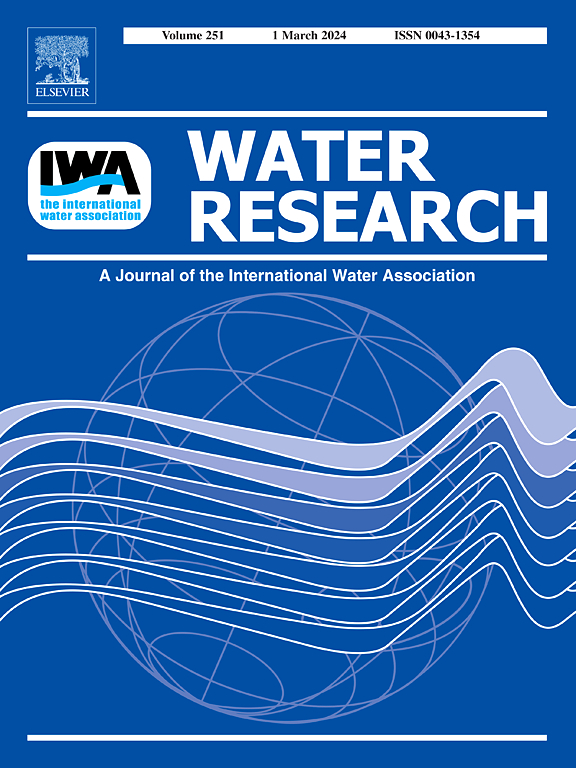Single-atom Fe-decorated N-doped porous carbon from waste biomass as a high-performance air-cathode for wastewater treatment in microbial fuel cells
IF 11.4
1区 环境科学与生态学
Q1 ENGINEERING, ENVIRONMENTAL
引用次数: 0
Abstract
Microbial fuel cells (MFCs) offer great potential for simultaneous wastewater treatment and energy generation, yet the development of cost-effective and efficient carbon-based cathode alternatives to Pt/C for oxygen reduction reactions remains challenging. This study presents a novel single-atom Fe-decorated N-doped porous carbon (Fe-SA/NBC) synthesized from biogas residue for wastewater treatment. The Fe-SA/NBC demonstrated superior catalytic performance, achieving a kinetic current density of 18.89 mA·cm-² compared to 10.38 mA·cm-² for Pt/C, and an enhanced electrochemical surface area with a Cdl of 1.81 mF·cm-² versus 1.76 mF·cm-² for Pt/C. When integrated into an MFC air-cathode under actual sewage, Fe-SA/NBC outperformed Pt/C, achieving a 22.6 % higher power density (882.92 mW·m-² vs. 719.81 mW·m-²), a higher output voltage (0.53 V vs. 0.47 V), and a longer operational duration (3.6 days vs. 3.2 days). Additionally, Fe-SA/NBC exhibited superior removal efficiencies for chemical oxygen demand and ammonia nitrogen during sewage treatment. In practical applications, MFCs equipped with Fe-SA/NBC successfully powered diodes and timers in series-connected configurations. This study introduces an innovative method for producing cost-effective and efficient cathode catalysts from waste biomass, offering significant potential for wastewater treatment and power generation systems.


求助全文
约1分钟内获得全文
求助全文
来源期刊

Water Research
环境科学-工程:环境
CiteScore
20.80
自引率
9.40%
发文量
1307
审稿时长
38 days
期刊介绍:
Water Research, along with its open access companion journal Water Research X, serves as a platform for publishing original research papers covering various aspects of the science and technology related to the anthropogenic water cycle, water quality, and its management worldwide. The audience targeted by the journal comprises biologists, chemical engineers, chemists, civil engineers, environmental engineers, limnologists, and microbiologists. The scope of the journal include:
•Treatment processes for water and wastewaters (municipal, agricultural, industrial, and on-site treatment), including resource recovery and residuals management;
•Urban hydrology including sewer systems, stormwater management, and green infrastructure;
•Drinking water treatment and distribution;
•Potable and non-potable water reuse;
•Sanitation, public health, and risk assessment;
•Anaerobic digestion, solid and hazardous waste management, including source characterization and the effects and control of leachates and gaseous emissions;
•Contaminants (chemical, microbial, anthropogenic particles such as nanoparticles or microplastics) and related water quality sensing, monitoring, fate, and assessment;
•Anthropogenic impacts on inland, tidal, coastal and urban waters, focusing on surface and ground waters, and point and non-point sources of pollution;
•Environmental restoration, linked to surface water, groundwater and groundwater remediation;
•Analysis of the interfaces between sediments and water, and between water and atmosphere, focusing specifically on anthropogenic impacts;
•Mathematical modelling, systems analysis, machine learning, and beneficial use of big data related to the anthropogenic water cycle;
•Socio-economic, policy, and regulations studies.
 求助内容:
求助内容: 应助结果提醒方式:
应助结果提醒方式:


